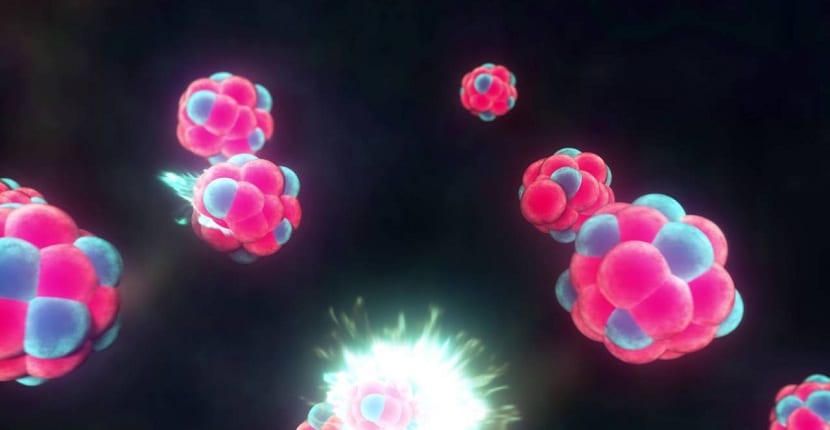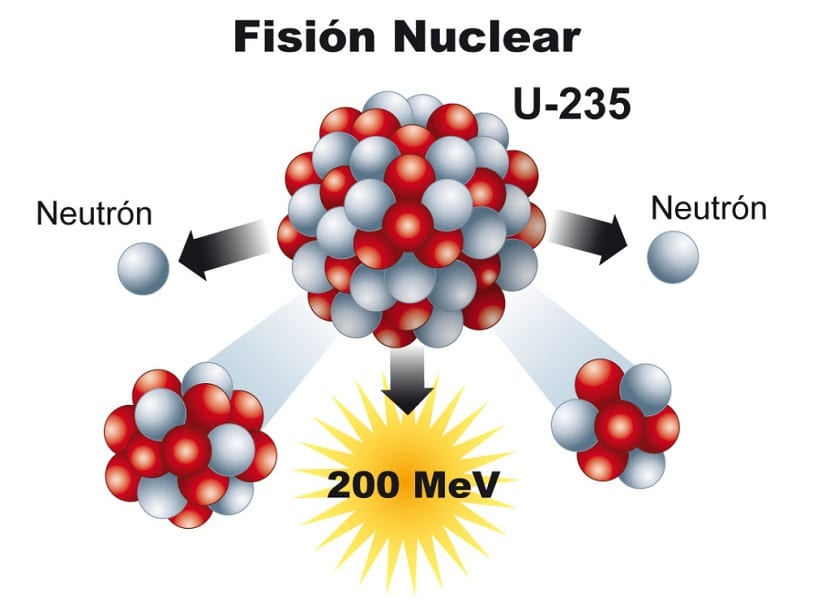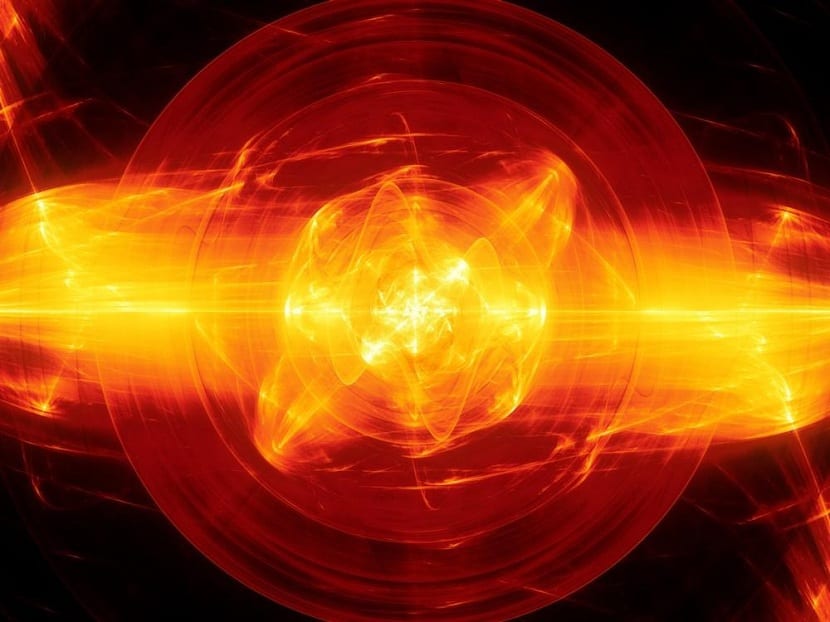
Surely you know that one of the ways to produce energy and electricity is done through the use of nuclear energy. But you may not know how it really works. There are two processes of nuclear energy formation: nuclear fission and nuclear fusion.
Do you want to know what nuclear fission is and everything related to it?
Nuclear fision

Nuclear fission is a chemical reaction in which the heavier nucleus is bombarded with neutrons. When this happens, it becomes a more unstable nucleus and decomposes into two nuclei, whose sizes are similar in the same order of magnitude. In this process large amount of energy is released and several neutrons are emitted.
When neutrons are emitted by the division of the nucleus, they are capable of causing other fissions by interacting with other nearby nuclei. Once the neutrons cause other fissions, the neutrons that will be released from these will generate even more fissions. So on as a large amount of energy is generated. This process occurs in a small fraction of a second and is known as a chain reaction. The nuclei that have fissioned release a million times more energy than that obtained by burning a block of coal or exploding a block of dynamite of the same mass. For this reason, nuclear energy is a very powerful energy source and used for high energy requirements.
This release of energy occurs faster than in a chemical reaction.
When neutron fissions occur and only one neutron is released causing subsequent fission, the number of fissions occurring per second is constant and the reactions can be well controlled. This is the principle by which they work nuclear reactors.
Difference between fusion and fission

Both are nuclear reactions that release the energy contained in the nucleus of an atom. But there are big differences between the two. Nuclear fission, as has been commented, is the separation of the heavier nucleus into smaller ones, through the collision with neutrons. In the case of nuclear fusion, it is the opposite. It is the combination of lighter cores to create a bigger and heavier one.
For example, in nuclear fission, uranium 235 (it is the only isotope that can undergo nuclear fission and that is found in nature) combines with a neutron to form a more stable atom that divides rapidly andn barium 144 and krypton 89, plus three neutrons. This is one of the possible reactions that occur when uranium combines with the neutron.
With this operation the nuclear reactors that are found today and that are used for the generation of electrical energy act.
For nuclear fusion to take place, it is necessary for the two lighter nuclei to unite to form a heavier one. In this process a large amount of energy is released. For example, in the Sun nuclear fusion processes are continuously taking place in which atoms with a lower mass are uniting to form heavier ones. The two lighter nuclei must be positively charged and move closer to each other overcoming the electrostatic forces of repulsion that exist. This requires a large amount of temperature and pressure. On our planet, since there is no pressure that exists in the Sun, the necessary energy that is needed for the nuclei to react and to overcome these repulsive forces they are achieved by means of a particle accelerator.
One of the most typical nuclear fusion reactions is the one that consists of the combination of two isotopes of hydrogen, deuterium and tritium, to form a helium atom plus a neutron. When this happens, in the Sun there are high gravitational pressures to which the hydrogen atoms are subjected and they need temperatures of 15 million degrees Celsius to fuse. Every second 600 million tons of hydrogen fuse to form helium.
Nowadays there are no reactors that work with nuclear fusion, since it is very complex to recreate these conditions. The most that is being seen is an experimental nuclear fusion reactor called ITER that is being built in France and that tries to determine if this energy production process is viable both technologically and economically, carrying out nuclear fusion through magnetic confinement.
Critical mass

The critical mass is the least amount of fissile material that is needed so that a nuclear chain reaction can be maintained and energy can be generated in a constant way.
Although in each nuclear fission between two and three neutrons are produced, not all the neutrons that are released are capable of being able to continue with another fission reaction, but some of them are lost. If these neutrons released by each reaction are lost at a rate greater than that are capable of being formed by fission, the chain reaction will not be sustainable and it will stop.
Therefore, this critical mass will depend on several factors such as the physical and nuclear properties, the geometry and the purity of each atom.
To have a reactor in which the least neutrons escape, a sphere geometry is needed, since it has the minimum possible surface area so that neutron leakage is reduced. If the material we use to fission we border it with a neutron reflector, many more neutrons are lost and the critical mass that is needed is reduced. This saves raw materials.
Spontaneous nuclear fission
When this happens, it is not necessary that a neutron has to be absorbed from the outside, but in certain isotopes of uranium and plutonium, having a more unstable atomic structure, they are capable of spontaneous fission.
Therefore, in each nuclear fission reaction there is the probability per second that an atom is capable of fission spontaneously, that is, without anyone intervening. For example, plutonium 239 is more likely to spontaneously fission than uranium 235.
With this information I hope you know something more about how nuclear energy is created for the generation of electricity in cities.